 SubscriptionFrom: $ 59.00 / yearThe Journal of Resistance Studies in paperback ships twice per year with world-wide free shipping. Please select an individual or institutional (workplace) subscription. Digital institutional subscription access is provided either by username and password or by IP address. To set up IP access or if you have any inquiries regarding our subscription, please contact Debbie Weyl at [email protected]. Prices For Institutions: 299 USD (PRINT AND DIGITAL) 259 USD (DIGITAL ONLY) Individuals: 85 USD (PRINT AND DIGITAL) 59 USD (DIGITAL ONLY)
SubscriptionFrom: $ 59.00 / yearThe Journal of Resistance Studies in paperback ships twice per year with world-wide free shipping. Please select an individual or institutional (workplace) subscription. Digital institutional subscription access is provided either by username and password or by IP address. To set up IP access or if you have any inquiries regarding our subscription, please contact Debbie Weyl at [email protected]. Prices For Institutions: 299 USD (PRINT AND DIGITAL) 259 USD (DIGITAL ONLY) Individuals: 85 USD (PRINT AND DIGITAL) 59 USD (DIGITAL ONLY) Volume 9, Number 1 – 2023$ 59.00 – $ 299.00You may choose from the digital (PDF) and paperback version.
Volume 9, Number 1 – 2023$ 59.00 – $ 299.00You may choose from the digital (PDF) and paperback version. Editorial, Volume 9, Number 1 – 2023$ 20.00[av_heading heading='Editorial by Jørgen Johansen and Craig S. Brown' tag='h3' style='blockquote classic-quote' size='' av_uid='av-4f7f0v'] [/av_heading] [av_hr class='short' height='50' shadow='no-shadow' position='center' custom_border='av-border-thin' custom_width='50px' custom_border_color='' custom_margin_top='30px' custom_margin_bottom='30px' icon_select='yes' custom_icon_color='' icon='ue808' font='entypo-fontello' av_uid='av-8ej7j']
Editorial, Volume 9, Number 1 – 2023$ 20.00[av_heading heading='Editorial by Jørgen Johansen and Craig S. Brown' tag='h3' style='blockquote classic-quote' size='' av_uid='av-4f7f0v'] [/av_heading] [av_hr class='short' height='50' shadow='no-shadow' position='center' custom_border='av-border-thin' custom_width='50px' custom_border_color='' custom_margin_top='30px' custom_margin_bottom='30px' icon_select='yes' custom_icon_color='' icon='ue808' font='entypo-fontello' av_uid='av-8ej7j'] Conscription Refusal as Political Resistance$ 20.00[av_heading heading='Article by Janne Flyghed' tag='h3' style='blockquote classic-quote' size='' ] [/av_heading] [av_hr class='short' height='50' shadow='no-shadow' position='center' custom_border='av-border-thin' custom_width='50px' custom_border_color='' custom_margin_top='30px' custom_margin_bottom='30px' icon_select='yes' custom_icon_color='' icon='ue808' font='entypo-fontello'] Since the law on universal conscription was passed 1901, there has been a debate in Sweden concerning how to deal with those who refuse military service. The state faces a dilemma: on the one hand maintaining the law on conscription, while on the other allowing the right to conscientious objection. The objective of this article is to scrutinize how the Swedish state has tried to solve this dilemma. At the beginning of the 20th century, those who refused to fulfill the fundamental duty of military service were not regarded as deserving any kind of legal protection. Their actions questioned the consensus on the need for a military defense, and therefore had to be punished. But it did not take long until this view was modified, and a law was established that opened up the option of community service for conscientious objectors. In that way, the legislators created a buffer in the conflict between pro-militarists and anti-militarists. As long as the objectors stayed in the buffer construction, they did not represent any threat towards military defense. On the contrary, they even served as proof that the state respected human rights. The opposition was in that manner divided into two parts; those who accepted community service and those who did not. The latter, who did not accept the state’s offer of community service, were sentenced to prison. Since 1901, the legislator’s main strategy to tackle opposition towards military defense has been a combination of co-optation via community service and repression via prison for those who do not accept that service. It has been of great concern for the lawmakers to keep the number of the latter, the total resisters, sentenced to prison as low as possible. If the number becomes too high, it will cause debate and criticism, both in public and in the parliament. The lawmakers have responded by modifying the prison sentence and changing the construction of the buffer.
Conscription Refusal as Political Resistance$ 20.00[av_heading heading='Article by Janne Flyghed' tag='h3' style='blockquote classic-quote' size='' ] [/av_heading] [av_hr class='short' height='50' shadow='no-shadow' position='center' custom_border='av-border-thin' custom_width='50px' custom_border_color='' custom_margin_top='30px' custom_margin_bottom='30px' icon_select='yes' custom_icon_color='' icon='ue808' font='entypo-fontello'] Since the law on universal conscription was passed 1901, there has been a debate in Sweden concerning how to deal with those who refuse military service. The state faces a dilemma: on the one hand maintaining the law on conscription, while on the other allowing the right to conscientious objection. The objective of this article is to scrutinize how the Swedish state has tried to solve this dilemma. At the beginning of the 20th century, those who refused to fulfill the fundamental duty of military service were not regarded as deserving any kind of legal protection. Their actions questioned the consensus on the need for a military defense, and therefore had to be punished. But it did not take long until this view was modified, and a law was established that opened up the option of community service for conscientious objectors. In that way, the legislators created a buffer in the conflict between pro-militarists and anti-militarists. As long as the objectors stayed in the buffer construction, they did not represent any threat towards military defense. On the contrary, they even served as proof that the state respected human rights. The opposition was in that manner divided into two parts; those who accepted community service and those who did not. The latter, who did not accept the state’s offer of community service, were sentenced to prison. Since 1901, the legislator’s main strategy to tackle opposition towards military defense has been a combination of co-optation via community service and repression via prison for those who do not accept that service. It has been of great concern for the lawmakers to keep the number of the latter, the total resisters, sentenced to prison as low as possible. If the number becomes too high, it will cause debate and criticism, both in public and in the parliament. The lawmakers have responded by modifying the prison sentence and changing the construction of the buffer. Nonviolent Resistance in Bolivia’s Age of Neoliberalism$ 20.00[av_heading heading='Article by Reynaldo Tapia' tag='h3' style='blockquote classic-quote' size='' ] [/av_heading] [av_hr class='short' height='50' shadow='no-shadow' position='center' custom_border='av-border-thin' custom_width='50px' custom_border_color='' custom_margin_top='30px' custom_margin_bottom='30px' icon_select='yes' custom_icon_color='' icon='ue808' font='entypo-fontello'] Bolivia presents a unique case of the effectiveness of nonviolent resistance aimed not only at countering neoliberal policies but also changing the power relations within the country. This article examines how nonviolent resistance was implemented and transformed in Bolivia during six neoliberal administrations, from 1982 to 2003. The economic solutions touted by the Washington Consensus gave rise to the emergence of counter-hegemonic social movements that rejected and opposed Western ideals of neoliberalism. For a little over two decades and six Bolivian administrations, the government promoted these neoliberal policies of state deregulation, liberalization of trade, and the privatization of public enterprises. The imposed economic principles of neoliberalism provided the opportunity for mass mobilization of union workers, miners, campesinos, cocaleros, university students, political activists, and community leaders. From hunger strikes to road blockades, mass protests, and marches, this article describes the benefits and outcomes of nonviolent resistance campaigns and will detail how these nonviolent strategies were used to fight against government sponsored neoliberal economic reforms.
Nonviolent Resistance in Bolivia’s Age of Neoliberalism$ 20.00[av_heading heading='Article by Reynaldo Tapia' tag='h3' style='blockquote classic-quote' size='' ] [/av_heading] [av_hr class='short' height='50' shadow='no-shadow' position='center' custom_border='av-border-thin' custom_width='50px' custom_border_color='' custom_margin_top='30px' custom_margin_bottom='30px' icon_select='yes' custom_icon_color='' icon='ue808' font='entypo-fontello'] Bolivia presents a unique case of the effectiveness of nonviolent resistance aimed not only at countering neoliberal policies but also changing the power relations within the country. This article examines how nonviolent resistance was implemented and transformed in Bolivia during six neoliberal administrations, from 1982 to 2003. The economic solutions touted by the Washington Consensus gave rise to the emergence of counter-hegemonic social movements that rejected and opposed Western ideals of neoliberalism. For a little over two decades and six Bolivian administrations, the government promoted these neoliberal policies of state deregulation, liberalization of trade, and the privatization of public enterprises. The imposed economic principles of neoliberalism provided the opportunity for mass mobilization of union workers, miners, campesinos, cocaleros, university students, political activists, and community leaders. From hunger strikes to road blockades, mass protests, and marches, this article describes the benefits and outcomes of nonviolent resistance campaigns and will detail how these nonviolent strategies were used to fight against government sponsored neoliberal economic reforms. Structural violence and repertoires of resistance in South Africa$ 20.00[av_heading heading='Article by Hilde Ibsen, Penelope Engel-Hills, and Carolina Jernbro' tag='h3' style='blockquote classic-quote' size='' ] [/av_heading] [av_hr class='short' height='50' shadow='no-shadow' position='center' custom_border='av-border-thin' custom_width='50px' custom_border_color='' custom_margin_top='30px' custom_margin_bottom='30px' icon_select='yes' custom_icon_color='' icon='ue808' font='entypo-fontello'] South Africa is listed as one of the most unequal societies in the world. Communities in this country face the aftermath of apartheid segregation, coupled with present neoliberal development strategies that impede socio-economic improvements and profound societal change. This has brought rise to high-risk areas where people experience societal neglect and, drawing on Johan Galtung’s work, we argue that this neglect constitutes structural violence, understood as something natural ‘as the air around us’ that upholds inequality and injustice. Within this context people are no longer willing to accept the status quo. Through ethnographic accounts, we explore over an extended time period how residents living in the particular community of Ocean View, on the Cape Peninsula, have developed repertoires of resistance, and how resistance tactics might impact on social change. The analysis reveals how variants of constructive and everyday resistance work together in parallel and overlap, and it also provides deep contextual understanding about how the dynamics between different types of resistance have the potential for generating short- and long-term outcomes. Our empirical findings suggest that short- term outcomes included heightened solidarity within the community; people contributed to the building of individual capacity, and put pressure on those in power to react to the issues of neglect. Outcomes related to long-term effects are more complex, although one important finding is that resistance contains imagination and hope for a desired future. Thereby, our article contributes to the empirical categories of resistance studies and the call for in-depth analysis of possible outcomes.
Structural violence and repertoires of resistance in South Africa$ 20.00[av_heading heading='Article by Hilde Ibsen, Penelope Engel-Hills, and Carolina Jernbro' tag='h3' style='blockquote classic-quote' size='' ] [/av_heading] [av_hr class='short' height='50' shadow='no-shadow' position='center' custom_border='av-border-thin' custom_width='50px' custom_border_color='' custom_margin_top='30px' custom_margin_bottom='30px' icon_select='yes' custom_icon_color='' icon='ue808' font='entypo-fontello'] South Africa is listed as one of the most unequal societies in the world. Communities in this country face the aftermath of apartheid segregation, coupled with present neoliberal development strategies that impede socio-economic improvements and profound societal change. This has brought rise to high-risk areas where people experience societal neglect and, drawing on Johan Galtung’s work, we argue that this neglect constitutes structural violence, understood as something natural ‘as the air around us’ that upholds inequality and injustice. Within this context people are no longer willing to accept the status quo. Through ethnographic accounts, we explore over an extended time period how residents living in the particular community of Ocean View, on the Cape Peninsula, have developed repertoires of resistance, and how resistance tactics might impact on social change. The analysis reveals how variants of constructive and everyday resistance work together in parallel and overlap, and it also provides deep contextual understanding about how the dynamics between different types of resistance have the potential for generating short- and long-term outcomes. Our empirical findings suggest that short- term outcomes included heightened solidarity within the community; people contributed to the building of individual capacity, and put pressure on those in power to react to the issues of neglect. Outcomes related to long-term effects are more complex, although one important finding is that resistance contains imagination and hope for a desired future. Thereby, our article contributes to the empirical categories of resistance studies and the call for in-depth analysis of possible outcomes. Classical Book Review by Sean Chabot: Hind Swaraj, 1909$ 20.00[av_heading heading='Classical Book Review by Sean Chabot: Hind Swaraj, 1909' tag='h3' style='blockquote classic-quote' size='' ] [/av_heading] [av_hr class='short' height='50' shadow='no-shadow' position='center' custom_border='av-border-thin' custom_width='50px' custom_border_color='' custom_margin_top='30px' custom_margin_bottom='30px' icon_select='yes' custom_icon_color='' icon='ue808' font='entypo-fontello']
Classical Book Review by Sean Chabot: Hind Swaraj, 1909$ 20.00[av_heading heading='Classical Book Review by Sean Chabot: Hind Swaraj, 1909' tag='h3' style='blockquote classic-quote' size='' ] [/av_heading] [av_hr class='short' height='50' shadow='no-shadow' position='center' custom_border='av-border-thin' custom_width='50px' custom_border_color='' custom_margin_top='30px' custom_margin_bottom='30px' icon_select='yes' custom_icon_color='' icon='ue808' font='entypo-fontello'] Reviews by Majken Jul Sørensen and Shima Tadrisi$ 20.00[av_heading heading='Reviews by Majken Jul Sørensen and Shima Tadrisi' tag='h3' style='blockquote classic-quote' size='' ] [/av_heading] [av_hr class='short' height='50' shadow='no-shadow' position='center' custom_border='av-border-thin' custom_width='50px' custom_border_color='' custom_margin_top='30px' custom_margin_bottom='30px' icon_select='yes' custom_icon_color='' icon='ue808' font='entypo-fontello']
Reviews by Majken Jul Sørensen and Shima Tadrisi$ 20.00[av_heading heading='Reviews by Majken Jul Sørensen and Shima Tadrisi' tag='h3' style='blockquote classic-quote' size='' ] [/av_heading] [av_hr class='short' height='50' shadow='no-shadow' position='center' custom_border='av-border-thin' custom_width='50px' custom_border_color='' custom_margin_top='30px' custom_margin_bottom='30px' icon_select='yes' custom_icon_color='' icon='ue808' font='entypo-fontello'] Volume 8, Number 2 – 2022$ 59.00 – $ 299.00You may choose from the digital (PDF) and paperback version.
Volume 8, Number 2 – 2022$ 59.00 – $ 299.00You may choose from the digital (PDF) and paperback version.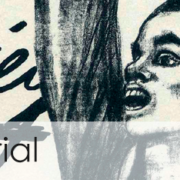 Editorial, Volume 8, Number 2 – 2022$ 20.00[av_heading heading='Editorial by Jørgen Johansen' tag='h3' style='blockquote classic-quote' size='' av_uid='av-4f7f0v'] [/av_heading] [av_hr class='short' height='50' shadow='no-shadow' position='center' custom_border='av-border-thin' custom_width='50px' custom_border_color='' custom_margin_top='30px' custom_margin_bottom='30px' icon_select='yes' custom_icon_color='' icon='ue808' font='entypo-fontello' av_uid='av-8ej7j']
Editorial, Volume 8, Number 2 – 2022$ 20.00[av_heading heading='Editorial by Jørgen Johansen' tag='h3' style='blockquote classic-quote' size='' av_uid='av-4f7f0v'] [/av_heading] [av_hr class='short' height='50' shadow='no-shadow' position='center' custom_border='av-border-thin' custom_width='50px' custom_border_color='' custom_margin_top='30px' custom_margin_bottom='30px' icon_select='yes' custom_icon_color='' icon='ue808' font='entypo-fontello' av_uid='av-8ej7j']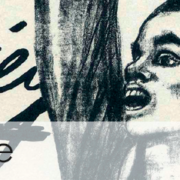 Thinking communicatively and relationally about practices of resistances$ 20.00[av_heading heading='Article by Sophie Del Fa, Geneviève Boivin, Ann-Sophie Boily, Ève Leclair' tag='h3' style='blockquote classic-quote' size='' ] [/av_heading] [av_hr class='short' height='50' shadow='no-shadow' position='center' custom_border='av-border-thin' custom_width='50px' custom_border_color='' custom_margin_top='30px' custom_margin_bottom='30px' icon_select='yes' custom_icon_color='' icon='ue808' font='entypo-fontello'] By reviewing the literature on practices of resistances in social sciences, organization studies, and communication, this essay aims to show how a communicative relationality perspective anchored in the constitutive communication approach (CCO) is relevant to exploring the large phenomenon of resistances. We define resistances as a set of relational and communicative practices that seek individual and/or collective liberation against/through/within diverse hegemonic powers perceived as constraining by one or several individuals. This set of relational practices enacts (and are enacted by) various degrees of organizationality that a communicative approach helps highlight. Our conceptualization of practices of resistances inspired by emergent definitions of both communication and organizations opens avenues to create original and engaged empirical studies.
Thinking communicatively and relationally about practices of resistances$ 20.00[av_heading heading='Article by Sophie Del Fa, Geneviève Boivin, Ann-Sophie Boily, Ève Leclair' tag='h3' style='blockquote classic-quote' size='' ] [/av_heading] [av_hr class='short' height='50' shadow='no-shadow' position='center' custom_border='av-border-thin' custom_width='50px' custom_border_color='' custom_margin_top='30px' custom_margin_bottom='30px' icon_select='yes' custom_icon_color='' icon='ue808' font='entypo-fontello'] By reviewing the literature on practices of resistances in social sciences, organization studies, and communication, this essay aims to show how a communicative relationality perspective anchored in the constitutive communication approach (CCO) is relevant to exploring the large phenomenon of resistances. We define resistances as a set of relational and communicative practices that seek individual and/or collective liberation against/through/within diverse hegemonic powers perceived as constraining by one or several individuals. This set of relational practices enacts (and are enacted by) various degrees of organizationality that a communicative approach helps highlight. Our conceptualization of practices of resistances inspired by emergent definitions of both communication and organizations opens avenues to create original and engaged empirical studies. Beyond “Individual” or “Collective” Resistance: Assessment towards an Agenda for Future Research on Dissent$ 20.00[av_heading heading='Article by Mona Lilja, Stellan Vinthagen, and Kristin Wiksell' tag='h3' style='blockquote classic-quote' size='' ] [/av_heading] [av_hr class='short' height='50' shadow='no-shadow' position='center' custom_border='av-border-thin' custom_width='50px' custom_border_color='' custom_margin_top='30px' custom_margin_bottom='30px' icon_select='yes' custom_icon_color='' icon='ue808' font='entypo-fontello'] We argue that studies of resistance have suffered from a bifurcation of fields, whereby some focus on organized forms (social movements, civil society or revolutions), while others are concerned with individual types (everyday, local and dispersed) of resistance. This de facto academic division has unwittingly obscured the links, dynamics, hybridity and entanglements between different forms of resistance. In order to stimulate a more complex and nuanced understanding of resistance, we propose a new research agenda for transdisciplinary studies of resistance and present some connections between individual and more collective/organized forms of resistance that need to be systematically explored in future research. Overall, this article argues for the need to recognize both the variation in forms of resistance, and the (often hybrid) linkages between them. The recognition that individual acts of resistance are fundamentally entangled with collective or organized dissent is necessary for shifting our understanding of resistance.
Beyond “Individual” or “Collective” Resistance: Assessment towards an Agenda for Future Research on Dissent$ 20.00[av_heading heading='Article by Mona Lilja, Stellan Vinthagen, and Kristin Wiksell' tag='h3' style='blockquote classic-quote' size='' ] [/av_heading] [av_hr class='short' height='50' shadow='no-shadow' position='center' custom_border='av-border-thin' custom_width='50px' custom_border_color='' custom_margin_top='30px' custom_margin_bottom='30px' icon_select='yes' custom_icon_color='' icon='ue808' font='entypo-fontello'] We argue that studies of resistance have suffered from a bifurcation of fields, whereby some focus on organized forms (social movements, civil society or revolutions), while others are concerned with individual types (everyday, local and dispersed) of resistance. This de facto academic division has unwittingly obscured the links, dynamics, hybridity and entanglements between different forms of resistance. In order to stimulate a more complex and nuanced understanding of resistance, we propose a new research agenda for transdisciplinary studies of resistance and present some connections between individual and more collective/organized forms of resistance that need to be systematically explored in future research. Overall, this article argues for the need to recognize both the variation in forms of resistance, and the (often hybrid) linkages between them. The recognition that individual acts of resistance are fundamentally entangled with collective or organized dissent is necessary for shifting our understanding of resistance. Artpeace: Validating Power, Mobilising Resistance, and Imagining Emancipation$ 20.00[av_heading heading='Article by Oliver P. Richmond' tag='h3' style='blockquote classic-quote' size='' ] [/av_heading] [av_hr class='short' height='50' shadow='no-shadow' position='center' custom_border='av-border-thin' custom_width='50px' custom_border_color='' custom_margin_top='30px' custom_margin_bottom='30px' icon_select='yes' custom_icon_color='' icon='ue808' font='entypo-fontello'] Art has apparently followed political power for much of history, while avoiding representations of social, subaltern, and political resistance, or experimentation with new approaches to emancipation. Less obviously, however, this article outlines how a creative synthesis of critique, politics, and representation has led to an evolving form of ‘artpeace’. This concept appears to have been related to power and was thus limited and Eurocentric in the past, but more importantly it has also provided a platform for critical agency, resistance, and experimentation, with implications for the politics of peacemaking. This article outlines what this means for various strands of artpeace and their possible conceptual implications. ‘Pax optima rerum’ (Peace is the greatest good) ‘Pax optima rerum quas homini nouisse datum est, pax una triumphis innumeris potior…’ (peace is the best of things which it is given to man to know, a single peace is more powerful than countless triumphs). Silius Italicus, Punica, (25-101 AD)
Artpeace: Validating Power, Mobilising Resistance, and Imagining Emancipation$ 20.00[av_heading heading='Article by Oliver P. Richmond' tag='h3' style='blockquote classic-quote' size='' ] [/av_heading] [av_hr class='short' height='50' shadow='no-shadow' position='center' custom_border='av-border-thin' custom_width='50px' custom_border_color='' custom_margin_top='30px' custom_margin_bottom='30px' icon_select='yes' custom_icon_color='' icon='ue808' font='entypo-fontello'] Art has apparently followed political power for much of history, while avoiding representations of social, subaltern, and political resistance, or experimentation with new approaches to emancipation. Less obviously, however, this article outlines how a creative synthesis of critique, politics, and representation has led to an evolving form of ‘artpeace’. This concept appears to have been related to power and was thus limited and Eurocentric in the past, but more importantly it has also provided a platform for critical agency, resistance, and experimentation, with implications for the politics of peacemaking. This article outlines what this means for various strands of artpeace and their possible conceptual implications. ‘Pax optima rerum’ (Peace is the greatest good) ‘Pax optima rerum quas homini nouisse datum est, pax una triumphis innumeris potior…’ (peace is the best of things which it is given to man to know, a single peace is more powerful than countless triumphs). Silius Italicus, Punica, (25-101 AD)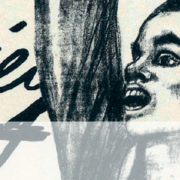 Changing the World through Political Education: On the Attempt to turn the World upside down with the Help of Political Education$ 20.00[av_heading heading='Essay by Stefan Kalmring and Silke Veth' tag='h3' style='blockquote classic-quote' size='' ] [/av_heading] [av_hr class='short' height='50' shadow='no-shadow' position='center' custom_border='av-border-thin' custom_width='50px' custom_border_color='' custom_margin_top='30px' custom_margin_bottom='30px' icon_select='yes' custom_icon_color='' icon='ue808' font='entypo-fontello']
Changing the World through Political Education: On the Attempt to turn the World upside down with the Help of Political Education$ 20.00[av_heading heading='Essay by Stefan Kalmring and Silke Veth' tag='h3' style='blockquote classic-quote' size='' ] [/av_heading] [av_hr class='short' height='50' shadow='no-shadow' position='center' custom_border='av-border-thin' custom_width='50px' custom_border_color='' custom_margin_top='30px' custom_margin_bottom='30px' icon_select='yes' custom_icon_color='' icon='ue808' font='entypo-fontello']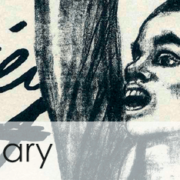 Obituary: April Carter (1937-2022)$ 20.00[av_heading heading='Obituary by Andrew Rigby and Paul Rogers' tag='h3' style='blockquote classic-quote' size='' ] [/av_heading] [av_hr class='short' height='50' shadow='no-shadow' position='center' custom_border='av-border-thin' custom_width='50px' custom_border_color='' custom_margin_top='30px' custom_margin_bottom='30px' icon_select='yes' custom_icon_color='' icon='ue808' font='entypo-fontello']
Obituary: April Carter (1937-2022)$ 20.00[av_heading heading='Obituary by Andrew Rigby and Paul Rogers' tag='h3' style='blockquote classic-quote' size='' ] [/av_heading] [av_hr class='short' height='50' shadow='no-shadow' position='center' custom_border='av-border-thin' custom_width='50px' custom_border_color='' custom_margin_top='30px' custom_margin_bottom='30px' icon_select='yes' custom_icon_color='' icon='ue808' font='entypo-fontello']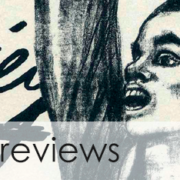 Reviews by Julian Reid, G. Brandon Swann, and Craig Brown$ 20.00[av_heading heading='Reviews by Julian Reid, G. Brandon Swann, and Craig Brown' tag='h3' style='blockquote classic-quote' size='' ] [/av_heading] [av_hr class='short' height='50' shadow='no-shadow' position='center' custom_border='av-border-thin' custom_width='50px' custom_border_color='' custom_margin_top='30px' custom_margin_bottom='30px' icon_select='yes' custom_icon_color='' icon='ue808' font='entypo-fontello']
Reviews by Julian Reid, G. Brandon Swann, and Craig Brown$ 20.00[av_heading heading='Reviews by Julian Reid, G. Brandon Swann, and Craig Brown' tag='h3' style='blockquote classic-quote' size='' ] [/av_heading] [av_hr class='short' height='50' shadow='no-shadow' position='center' custom_border='av-border-thin' custom_width='50px' custom_border_color='' custom_margin_top='30px' custom_margin_bottom='30px' icon_select='yes' custom_icon_color='' icon='ue808' font='entypo-fontello']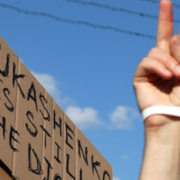 Volume 8, Number 1 – 2022$ 59.00 – $ 299.00You may choose from the digital (PDF) and paperback version.
Volume 8, Number 1 – 2022$ 59.00 – $ 299.00You may choose from the digital (PDF) and paperback version.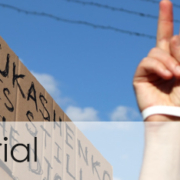 Editorial, Volume 8, Number 1 – 2022$ 20.00[av_heading heading='Editorial by Craig S. Brown' tag='h3' style='blockquote classic-quote' size='' av_uid='av-4f7f0v'] [/av_heading] [av_hr class='short' height='50' shadow='no-shadow' position='center' custom_border='av-border-thin' custom_width='50px' custom_border_color='' custom_margin_top='30px' custom_margin_bottom='30px' icon_select='yes' custom_icon_color='' icon='ue808' font='entypo-fontello' av_uid='av-8ej7j']
Editorial, Volume 8, Number 1 – 2022$ 20.00[av_heading heading='Editorial by Craig S. Brown' tag='h3' style='blockquote classic-quote' size='' av_uid='av-4f7f0v'] [/av_heading] [av_hr class='short' height='50' shadow='no-shadow' position='center' custom_border='av-border-thin' custom_width='50px' custom_border_color='' custom_margin_top='30px' custom_margin_bottom='30px' icon_select='yes' custom_icon_color='' icon='ue808' font='entypo-fontello' av_uid='av-8ej7j']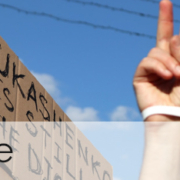 Overcoming the ‘Barrier of Fear’ in Order to Resist: the 2020 Protests against the Lukashenko Regime in Belarus$ 20.00[av_heading heading='Article by Craig S. Brown' tag='h3' style='blockquote classic-quote' size='' ] [/av_heading] [av_hr class='short' height='50' shadow='no-shadow' position='center' custom_border='av-border-thin' custom_width='50px' custom_border_color='' custom_margin_top='30px' custom_margin_bottom='30px' icon_select='yes' custom_icon_color='' icon='ue808' font='entypo-fontello'] In August 2020, widespread open resistance emerged against Lukashenko’s regime in Belarus, in the wake of the presidential elections. Through a media content analysis, this paper assesses how the emotion of fear was presented by English language European and North American print and online media, with the departure point being the perceived loss of fear among Belarusians. It seeks to understand: how was fear discussed in relation to resistance in Belarus in the mainstream media accounts? How did fear manifest among Belarusians and what were its effects? For resistance movements, what are the practical implications of understanding how fear manifests and affects actors? Although several headlines in the key period of mid-August 2020 reflect the phenomenon of a ‘barrier of fear’ being broken, Belarusian resisters’ perspectives present in some of the articles show how feelings of fear are far more complex. The themes are as follows: ‘fear remains’; the ‘loss of fear’ among opponents of Lukashenko; ‘pre-election loss of fear’; ‘fear among the regime and security force elements’; ‘taking action as imperative—regardless of fear’, as well as a ‘point of no return’ being reached. It is clear that it is more accurate to talk about people making a decision to resist despite their fear. Moreover, there seems to be a crucial relationship between feelings of anger about regime brutality and the willingness to act regardless of fear about the implications.
Overcoming the ‘Barrier of Fear’ in Order to Resist: the 2020 Protests against the Lukashenko Regime in Belarus$ 20.00[av_heading heading='Article by Craig S. Brown' tag='h3' style='blockquote classic-quote' size='' ] [/av_heading] [av_hr class='short' height='50' shadow='no-shadow' position='center' custom_border='av-border-thin' custom_width='50px' custom_border_color='' custom_margin_top='30px' custom_margin_bottom='30px' icon_select='yes' custom_icon_color='' icon='ue808' font='entypo-fontello'] In August 2020, widespread open resistance emerged against Lukashenko’s regime in Belarus, in the wake of the presidential elections. Through a media content analysis, this paper assesses how the emotion of fear was presented by English language European and North American print and online media, with the departure point being the perceived loss of fear among Belarusians. It seeks to understand: how was fear discussed in relation to resistance in Belarus in the mainstream media accounts? How did fear manifest among Belarusians and what were its effects? For resistance movements, what are the practical implications of understanding how fear manifests and affects actors? Although several headlines in the key period of mid-August 2020 reflect the phenomenon of a ‘barrier of fear’ being broken, Belarusian resisters’ perspectives present in some of the articles show how feelings of fear are far more complex. The themes are as follows: ‘fear remains’; the ‘loss of fear’ among opponents of Lukashenko; ‘pre-election loss of fear’; ‘fear among the regime and security force elements’; ‘taking action as imperative—regardless of fear’, as well as a ‘point of no return’ being reached. It is clear that it is more accurate to talk about people making a decision to resist despite their fear. Moreover, there seems to be a crucial relationship between feelings of anger about regime brutality and the willingness to act regardless of fear about the implications. A Resistance History of India$ 20.00[av_heading heading='Article by Stellan Vinthagen' tag='h3' style='blockquote classic-quote' size='' ] [/av_heading] [av_hr class='short' height='50' shadow='no-shadow' position='center' custom_border='av-border-thin' custom_width='50px' custom_border_color='' custom_margin_top='30px' custom_margin_bottom='30px' icon_select='yes' custom_icon_color='' icon='ue808' font='entypo-fontello'] This article takes a historical view on the Indian civil society; its actors, strategies and issues, and evaluates its democracy-promoting resistance, and the impact from globalization. After a brief overview of the pre-independence context, and the early post-independence developments, the period of advanced globalization from the 1990s is focused. India is a country with a strong social movement culture, formed through its history of anticolonial struggle. The civil society is vibrant, diverse and conflictual, with a multitude of groups. Key examples are the anti-colonial movement, the land reform movement, the mobilization for “Total Revolution”, as well as alliances of movements and recurrent mobilizations by peasants, women, Adivasi (Indigenous), Dalits (“untouchables”). The analysis outlines four historical periods with very different conditions for democracy-promoting resistance. The conclusion is that resistance has been very successful, especially initially. However, the analysis also shows how the counter-mobilization by Hindu nationalists grew strong and more impactful during advanced globalization. The result is that Indian democracy has been undermined. Thus, despite initial and fundamental impact, it is the Hindu nationalist counter-resistance to the resistance of pro-democracy civil society groups, that is impacting contemporary democracy.
A Resistance History of India$ 20.00[av_heading heading='Article by Stellan Vinthagen' tag='h3' style='blockquote classic-quote' size='' ] [/av_heading] [av_hr class='short' height='50' shadow='no-shadow' position='center' custom_border='av-border-thin' custom_width='50px' custom_border_color='' custom_margin_top='30px' custom_margin_bottom='30px' icon_select='yes' custom_icon_color='' icon='ue808' font='entypo-fontello'] This article takes a historical view on the Indian civil society; its actors, strategies and issues, and evaluates its democracy-promoting resistance, and the impact from globalization. After a brief overview of the pre-independence context, and the early post-independence developments, the period of advanced globalization from the 1990s is focused. India is a country with a strong social movement culture, formed through its history of anticolonial struggle. The civil society is vibrant, diverse and conflictual, with a multitude of groups. Key examples are the anti-colonial movement, the land reform movement, the mobilization for “Total Revolution”, as well as alliances of movements and recurrent mobilizations by peasants, women, Adivasi (Indigenous), Dalits (“untouchables”). The analysis outlines four historical periods with very different conditions for democracy-promoting resistance. The conclusion is that resistance has been very successful, especially initially. However, the analysis also shows how the counter-mobilization by Hindu nationalists grew strong and more impactful during advanced globalization. The result is that Indian democracy has been undermined. Thus, despite initial and fundamental impact, it is the Hindu nationalist counter-resistance to the resistance of pro-democracy civil society groups, that is impacting contemporary democracy. Humanitarian Grass-roots work in Refugee Resettlement during the Trump Administration: A Study of Constructive Resistance$ 20.00[av_heading heading='Article by Barbara Franz' tag='h3' style='blockquote classic-quote' size='' ] [/av_heading] [av_hr class='short' height='50' shadow='no-shadow' position='center' custom_border='av-border-thin' custom_width='50px' custom_border_color='' custom_margin_top='30px' custom_margin_bottom='30px' icon_select='yes' custom_icon_color='' icon='ue808' font='entypo-fontello'] The COVID-19 pandemic, in combination with the Trump administration’s anti-immigration policies, has led to policy shifts and temporary bans that essentially ended asylum and refugee resettlement in the United States for the period from 2019 to 2021. Regional organizations, however, have continued to sponsor refugees and provide community-based educational, employment, and material support work. In the Tri-State area of New Jersey, New York and Connecticut, local pockets of resistance initiated grass-roots programs such as COVID-19 Relief Funds, the Mask Making Initiative, the Lighthouse, and the Fun Club. The text investigates these programs and the four humanitarian NGOs in which they are housed, through the lens of ‘constructive resistance’, especially the works of Mona Lilja, Majken Jul Sørensen, and Minoo Koefoed. Situated between the politics of governance (Maiguashca 2003) and individual and grass-roots forms of resistance, this paper looks at local reactions that led to projects aiming at actively remaking community. The four projects exemplify the communities’ efforts to create humanitarian and localized structures of compassion, by developing programs that assist and help those individuals who were exposed to the most aggressively exclusivist policies of the Trump administration.
Humanitarian Grass-roots work in Refugee Resettlement during the Trump Administration: A Study of Constructive Resistance$ 20.00[av_heading heading='Article by Barbara Franz' tag='h3' style='blockquote classic-quote' size='' ] [/av_heading] [av_hr class='short' height='50' shadow='no-shadow' position='center' custom_border='av-border-thin' custom_width='50px' custom_border_color='' custom_margin_top='30px' custom_margin_bottom='30px' icon_select='yes' custom_icon_color='' icon='ue808' font='entypo-fontello'] The COVID-19 pandemic, in combination with the Trump administration’s anti-immigration policies, has led to policy shifts and temporary bans that essentially ended asylum and refugee resettlement in the United States for the period from 2019 to 2021. Regional organizations, however, have continued to sponsor refugees and provide community-based educational, employment, and material support work. In the Tri-State area of New Jersey, New York and Connecticut, local pockets of resistance initiated grass-roots programs such as COVID-19 Relief Funds, the Mask Making Initiative, the Lighthouse, and the Fun Club. The text investigates these programs and the four humanitarian NGOs in which they are housed, through the lens of ‘constructive resistance’, especially the works of Mona Lilja, Majken Jul Sørensen, and Minoo Koefoed. Situated between the politics of governance (Maiguashca 2003) and individual and grass-roots forms of resistance, this paper looks at local reactions that led to projects aiming at actively remaking community. The four projects exemplify the communities’ efforts to create humanitarian and localized structures of compassion, by developing programs that assist and help those individuals who were exposed to the most aggressively exclusivist policies of the Trump administration. Reviews by Crisol González García, Brian Martin, Bob Overy, Matthew Hewett, and Dalilah Shemia-Goeke$ 20.00[av_heading heading='Reviews by Crisol González García, Brian Martin, Bob Overy, Matthew Hewett, and Dalilah Shemia-Goeke' tag='h3' style='blockquote classic-quote' size='' ] [/av_heading] [av_hr class='short' height='50' shadow='no-shadow' position='center' custom_border='av-border-thin' custom_width='50px' custom_border_color='' custom_margin_top='30px' custom_margin_bottom='30px' icon_select='yes' custom_icon_color='' icon='ue808' font='entypo-fontello']
Reviews by Crisol González García, Brian Martin, Bob Overy, Matthew Hewett, and Dalilah Shemia-Goeke$ 20.00[av_heading heading='Reviews by Crisol González García, Brian Martin, Bob Overy, Matthew Hewett, and Dalilah Shemia-Goeke' tag='h3' style='blockquote classic-quote' size='' ] [/av_heading] [av_hr class='short' height='50' shadow='no-shadow' position='center' custom_border='av-border-thin' custom_width='50px' custom_border_color='' custom_margin_top='30px' custom_margin_bottom='30px' icon_select='yes' custom_icon_color='' icon='ue808' font='entypo-fontello']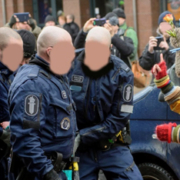 Volume 7, Number 2 – 2021$ 59.00 – $ 299.00You may choose from the digital (PDF) and paperback version.
Volume 7, Number 2 – 2021$ 59.00 – $ 299.00You may choose from the digital (PDF) and paperback version. Editorial, Volume 7, Number 2 – 2021$ 20.00[av_heading heading='Editorial by Matt Meyer' tag='h3' style='blockquote classic-quote' size='' av_uid='av-4f7f0v'] [/av_heading] [av_hr class='short' height='50' shadow='no-shadow' position='center' custom_border='av-border-thin' custom_width='50px' custom_border_color='' custom_margin_top='30px' custom_margin_bottom='30px' icon_select='yes' custom_icon_color='' icon='ue808' font='entypo-fontello' av_uid='av-8ej7j']
Editorial, Volume 7, Number 2 – 2021$ 20.00[av_heading heading='Editorial by Matt Meyer' tag='h3' style='blockquote classic-quote' size='' av_uid='av-4f7f0v'] [/av_heading] [av_hr class='short' height='50' shadow='no-shadow' position='center' custom_border='av-border-thin' custom_width='50px' custom_border_color='' custom_margin_top='30px' custom_margin_bottom='30px' icon_select='yes' custom_icon_color='' icon='ue808' font='entypo-fontello' av_uid='av-8ej7j']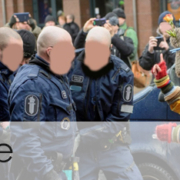 The Indigenous Bangladeshi Nonviolent Resistance to Corporate Coal$ 20.00[av_heading heading='Article by Elizabeth Schmidt' tag='h3' style='blockquote classic-quote' size='' ] [/av_heading] [av_hr class='short' height='50' shadow='no-shadow' position='center' custom_border='av-border-thin' custom_width='50px' custom_border_color='' custom_margin_top='30px' custom_margin_bottom='30px' icon_select='yes' custom_icon_color='' icon='ue808' font='entypo-fontello'] This paper analyzes strategic choices by the 2006-2014 Indigenous Peoples’ resistance movement opposing construction of a coal mine in Phulbari, Bangladesh. The campaign successfully prevented the mine’s construction. However, conflicts over land use in Bangladesh persist. This case study examines how closely the strategic choices of the campaign adhered to Ackerman and Kruegler’s Principles of Strategic Nonviolent Conflict, and how those choices furthered or impaired the campaign. Fostering collective identities to mobilize supporters and resources was integral to the campaign’s strategy, as was integration of diverse voices. Promoting powerful female voices furthered the campaign’s goals and contributed to advancing women’s status. Combining extra-institutional methods with traditional politics also enhanced the movement’s strategic potential. Managing perceptions and demonstrating autonomy allowed resistors to maintain collective power, despite holding less traditional sources of power. The campaign also found success in using external supporters to weaken their oppressors, while organizers inside the country set the vision of the movement. The campaign provides an example of how the Principles may be applied in contemporary campaigns against corporations across cultural contexts. The outcomes suggest that the Principles are still a relevant framework for nonviolent resistance. However, more research is needed to determine the conditions under which some principles apply
The Indigenous Bangladeshi Nonviolent Resistance to Corporate Coal$ 20.00[av_heading heading='Article by Elizabeth Schmidt' tag='h3' style='blockquote classic-quote' size='' ] [/av_heading] [av_hr class='short' height='50' shadow='no-shadow' position='center' custom_border='av-border-thin' custom_width='50px' custom_border_color='' custom_margin_top='30px' custom_margin_bottom='30px' icon_select='yes' custom_icon_color='' icon='ue808' font='entypo-fontello'] This paper analyzes strategic choices by the 2006-2014 Indigenous Peoples’ resistance movement opposing construction of a coal mine in Phulbari, Bangladesh. The campaign successfully prevented the mine’s construction. However, conflicts over land use in Bangladesh persist. This case study examines how closely the strategic choices of the campaign adhered to Ackerman and Kruegler’s Principles of Strategic Nonviolent Conflict, and how those choices furthered or impaired the campaign. Fostering collective identities to mobilize supporters and resources was integral to the campaign’s strategy, as was integration of diverse voices. Promoting powerful female voices furthered the campaign’s goals and contributed to advancing women’s status. Combining extra-institutional methods with traditional politics also enhanced the movement’s strategic potential. Managing perceptions and demonstrating autonomy allowed resistors to maintain collective power, despite holding less traditional sources of power. The campaign also found success in using external supporters to weaken their oppressors, while organizers inside the country set the vision of the movement. The campaign provides an example of how the Principles may be applied in contemporary campaigns against corporations across cultural contexts. The outcomes suggest that the Principles are still a relevant framework for nonviolent resistance. However, more research is needed to determine the conditions under which some principles apply Masked struggle: Uncivil disobedience on the streets of Finland$ 20.00[av_heading heading='Article by Johan-Eerik Kukko' tag='h3' style='blockquote classic-quote' size='' ] [/av_heading] [av_hr class='short' height='50' shadow='no-shadow' position='center' custom_border='av-border-thin' custom_width='50px' custom_border_color='' custom_margin_top='30px' custom_margin_bottom='30px' icon_select='yes' custom_icon_color='' icon='ue808' font='entypo-fontello'] In this article, I examine the messages that are connected to masks and other symbols in the short history of the Soldiers of Odin (SOO). Moreover, I compare the use of masks to the way that another Finnish activist group, Loldiers of Odin, used masks and symbols. SOO started street patrol activity in 2015 to ‘safeguard’ Finnish cities from the alleged threat of asylum seekers. In 2016, the Loldiers of Odin were founded to oppose SOO’s vigilante activity. They carnivalized the anti-immigrant group by appearing at their demonstrations and harassed their street patrols dressed as clowns. I discuss the dynamics of the two groups and analyze how they used masks and symbols in their activities. Especially in the case of SOO, I will focus on situations where the group uses Guy Fawkes masks, and in the case of Loldiers of Odin using clown costumes and make up. Additionally, I ask if their vigilante actions with masks can be understood as ‘uncivil disobedience’, a term that has been discussed for example by Jennet Kirkpatrick and Candice Delmas. In the end I will also show that both of these groups have two kinds of masks; one to wear and one to hide their real purposes
Masked struggle: Uncivil disobedience on the streets of Finland$ 20.00[av_heading heading='Article by Johan-Eerik Kukko' tag='h3' style='blockquote classic-quote' size='' ] [/av_heading] [av_hr class='short' height='50' shadow='no-shadow' position='center' custom_border='av-border-thin' custom_width='50px' custom_border_color='' custom_margin_top='30px' custom_margin_bottom='30px' icon_select='yes' custom_icon_color='' icon='ue808' font='entypo-fontello'] In this article, I examine the messages that are connected to masks and other symbols in the short history of the Soldiers of Odin (SOO). Moreover, I compare the use of masks to the way that another Finnish activist group, Loldiers of Odin, used masks and symbols. SOO started street patrol activity in 2015 to ‘safeguard’ Finnish cities from the alleged threat of asylum seekers. In 2016, the Loldiers of Odin were founded to oppose SOO’s vigilante activity. They carnivalized the anti-immigrant group by appearing at their demonstrations and harassed their street patrols dressed as clowns. I discuss the dynamics of the two groups and analyze how they used masks and symbols in their activities. Especially in the case of SOO, I will focus on situations where the group uses Guy Fawkes masks, and in the case of Loldiers of Odin using clown costumes and make up. Additionally, I ask if their vigilante actions with masks can be understood as ‘uncivil disobedience’, a term that has been discussed for example by Jennet Kirkpatrick and Candice Delmas. In the end I will also show that both of these groups have two kinds of masks; one to wear and one to hide their real purposes The Method of Political Resistance and the Concept of the ‘People’ in Tosaka Jun and Enrique Dussel$ 20.00[av_heading heading='Article by Dennis Stromback' tag='h3' style='blockquote classic-quote' size='' ] [/av_heading] [av_hr class='short' height='50' shadow='no-shadow' position='center' custom_border='av-border-thin' custom_width='50px' custom_border_color='' custom_margin_top='30px' custom_margin_bottom='30px' icon_select='yes' custom_icon_color='' icon='ue808' font='entypo-fontello'] It is rather common to couple Japanese Marxist Tosaka Jun (1900-1945) with critical theorists like Walter Benjamin or Theodor Adorno in the comparative philosophy literature, but little, if anything at all, has been said about the shared discursive strategies of political resistance theorized by Tosaka Jun and Latin American philosopher Enrique Dussel (1934- ). Despite being continents and generations apart, Tosaka and Dussel nonetheless offer similar critiques of empire building within a system of capitalism as well as methods of resistance to disrupt to its ideological justification. Linked by the lineage of Marxism and their suspicion of the deterministic aspects of modernist thought, both Tosaka and Dussel present accounts of political power bound to the ‘people’ themselves, packaged as hegemonic strategies (à la Gramsci) that privilege those on the periphery, that which refuse to be subsumed into the capitalist system generating colonial expansion. Where they diverge, however, is in their view of the ‘people’ for constructing, positioning, and localizing collective struggles and democratic movements, with each account being stronger in an area where the other is more limited, thus pointing towards a space of synthesis. This article therefore argues for a teaming up of what Dussel calls ‘el pueblo’—which is a theoretical category referring to the political power articulated by localized communities—with Tosaka’s critical method of journalistic and philosophical reflection, with the aim of empowering the people, because it will provide us with a stronger view of political resistance at the periphery that will act as a force for democratic possibilities.
The Method of Political Resistance and the Concept of the ‘People’ in Tosaka Jun and Enrique Dussel$ 20.00[av_heading heading='Article by Dennis Stromback' tag='h3' style='blockquote classic-quote' size='' ] [/av_heading] [av_hr class='short' height='50' shadow='no-shadow' position='center' custom_border='av-border-thin' custom_width='50px' custom_border_color='' custom_margin_top='30px' custom_margin_bottom='30px' icon_select='yes' custom_icon_color='' icon='ue808' font='entypo-fontello'] It is rather common to couple Japanese Marxist Tosaka Jun (1900-1945) with critical theorists like Walter Benjamin or Theodor Adorno in the comparative philosophy literature, but little, if anything at all, has been said about the shared discursive strategies of political resistance theorized by Tosaka Jun and Latin American philosopher Enrique Dussel (1934- ). Despite being continents and generations apart, Tosaka and Dussel nonetheless offer similar critiques of empire building within a system of capitalism as well as methods of resistance to disrupt to its ideological justification. Linked by the lineage of Marxism and their suspicion of the deterministic aspects of modernist thought, both Tosaka and Dussel present accounts of political power bound to the ‘people’ themselves, packaged as hegemonic strategies (à la Gramsci) that privilege those on the periphery, that which refuse to be subsumed into the capitalist system generating colonial expansion. Where they diverge, however, is in their view of the ‘people’ for constructing, positioning, and localizing collective struggles and democratic movements, with each account being stronger in an area where the other is more limited, thus pointing towards a space of synthesis. This article therefore argues for a teaming up of what Dussel calls ‘el pueblo’—which is a theoretical category referring to the political power articulated by localized communities—with Tosaka’s critical method of journalistic and philosophical reflection, with the aim of empowering the people, because it will provide us with a stronger view of political resistance at the periphery that will act as a force for democratic possibilities. Classical Book Review by Majken Jul Sørensen: Resistance and Milgram’s obedience studies in light of new research$ 20.00[av_heading heading='Classical Book Review by Majken Jul Sørensen: Resistance and Milgram’s obedience studies in light of new research' tag='h3' style='blockquote classic-quote' size='' ] [/av_heading] [av_hr class='short' height='50' shadow='no-shadow' position='center' custom_border='av-border-thin' custom_width='50px' custom_border_color='' custom_margin_top='30px' custom_margin_bottom='30px' icon_select='yes' custom_icon_color='' icon='ue808' font='entypo-fontello']
Classical Book Review by Majken Jul Sørensen: Resistance and Milgram’s obedience studies in light of new research$ 20.00[av_heading heading='Classical Book Review by Majken Jul Sørensen: Resistance and Milgram’s obedience studies in light of new research' tag='h3' style='blockquote classic-quote' size='' ] [/av_heading] [av_hr class='short' height='50' shadow='no-shadow' position='center' custom_border='av-border-thin' custom_width='50px' custom_border_color='' custom_margin_top='30px' custom_margin_bottom='30px' icon_select='yes' custom_icon_color='' icon='ue808' font='entypo-fontello'] Reviews by Brian Martin, Craig Brown, and Andrew Rigby$ 20.00[av_heading heading='Reviews by Brian Martin, Craig Brown, and Andrew Rigby' tag='h3' style='blockquote classic-quote' size='' ] [/av_heading] [av_hr class='short' height='50' shadow='no-shadow' position='center' custom_border='av-border-thin' custom_width='50px' custom_border_color='' custom_margin_top='30px' custom_margin_bottom='30px' icon_select='yes' custom_icon_color='' icon='ue808' font='entypo-fontello']
Reviews by Brian Martin, Craig Brown, and Andrew Rigby$ 20.00[av_heading heading='Reviews by Brian Martin, Craig Brown, and Andrew Rigby' tag='h3' style='blockquote classic-quote' size='' ] [/av_heading] [av_hr class='short' height='50' shadow='no-shadow' position='center' custom_border='av-border-thin' custom_width='50px' custom_border_color='' custom_margin_top='30px' custom_margin_bottom='30px' icon_select='yes' custom_icon_color='' icon='ue808' font='entypo-fontello'] Resistance and Milgram’s obedience studies in light of new research$ 20.00Review by Majken Jul Sørensen [av_hr class='short' height='50' shadow='no-shadow' position='center' custom_border='av-border-thin' custom_width='50px' custom_border_color='' custom_margin_top='30px' custom_margin_bottom='30px' icon_select='yes' custom_icon_color='' icon='ue808' font='entypo-fontello' av_uid='av-8ej7j']
Resistance and Milgram’s obedience studies in light of new research$ 20.00Review by Majken Jul Sørensen [av_hr class='short' height='50' shadow='no-shadow' position='center' custom_border='av-border-thin' custom_width='50px' custom_border_color='' custom_margin_top='30px' custom_margin_bottom='30px' icon_select='yes' custom_icon_color='' icon='ue808' font='entypo-fontello' av_uid='av-8ej7j'] Violence in Nonviolent Action: Power Relations in Joint Activism in Israel and Palestine$ 20.00[av_heading heading='Article by Anne de Jong' tag='h3' style='blockquote classic-quote' size='' ] [/av_heading] [av_hr class='short' height='50' shadow='no-shadow' position='center' custom_border='av-border-thin' custom_width='50px' custom_border_color='' custom_margin_top='30px' custom_margin_bottom='30px' icon_select='yes' custom_icon_color='' icon='ue808' font='entypo-fontello'] This paper critically engages with nonviolent activism and resistance in Israel and the Occupied Palestinian Territories. By placing nonviolent direct actions directly in the context of its violent surrounding, it will be argued that structural and symbolic violence can be present in nonviolent actions and that unequal power relations can therewith be reproduced. Certain nonviolent actions in Israel and Palestine, this paper poses, mirror or even enable the injustices they initially seek to oppose. Based on nineteen months of fieldwork research in Israel and the Occupied Palestinian Territories including annexed East Jerusalem and besieged Gaza, this paper provides a ethnographic description of a so called joint Palestinian-Israeli nonviolent action near the Gaza Strip. The ethnographic detail enables an analysis which reveals 1) how unequal power relations can be reproduced within nonviolent protests, and 2) how certain nonviolent protests can perpetuate the structural violence they initially seek to oppose. The primary aim of this paper is not to differentiate between ‘good’ and ‘bad’ activism or resistance perse. It does aim to show how meticulous attention to less visible forms of violence can deepen our understanding of the reproduction of power and structural violence within nonviolent protest.
Violence in Nonviolent Action: Power Relations in Joint Activism in Israel and Palestine$ 20.00[av_heading heading='Article by Anne de Jong' tag='h3' style='blockquote classic-quote' size='' ] [/av_heading] [av_hr class='short' height='50' shadow='no-shadow' position='center' custom_border='av-border-thin' custom_width='50px' custom_border_color='' custom_margin_top='30px' custom_margin_bottom='30px' icon_select='yes' custom_icon_color='' icon='ue808' font='entypo-fontello'] This paper critically engages with nonviolent activism and resistance in Israel and the Occupied Palestinian Territories. By placing nonviolent direct actions directly in the context of its violent surrounding, it will be argued that structural and symbolic violence can be present in nonviolent actions and that unequal power relations can therewith be reproduced. Certain nonviolent actions in Israel and Palestine, this paper poses, mirror or even enable the injustices they initially seek to oppose. Based on nineteen months of fieldwork research in Israel and the Occupied Palestinian Territories including annexed East Jerusalem and besieged Gaza, this paper provides a ethnographic description of a so called joint Palestinian-Israeli nonviolent action near the Gaza Strip. The ethnographic detail enables an analysis which reveals 1) how unequal power relations can be reproduced within nonviolent protests, and 2) how certain nonviolent protests can perpetuate the structural violence they initially seek to oppose. The primary aim of this paper is not to differentiate between ‘good’ and ‘bad’ activism or resistance perse. It does aim to show how meticulous attention to less visible forms of violence can deepen our understanding of the reproduction of power and structural violence within nonviolent protest. Rural Women in the Balkh and Herat Provinces of Afghanistan Simultaneous Resistance to, and Reproduction of, Patriarchal Power Structures$ 20.00Article by Sarah Louise Edgcumbe [av_hr class='short' height='50' shadow='no-shadow' position='center' custom_border='av-border-thin' custom_width='50px' custom_border_color='' custom_margin_top='30px' custom_margin_bottom='30px' icon_select='yes' custom_icon_color='' icon='ue808' font='entypo-fontello' av_uid='av-8ej7j']
Rural Women in the Balkh and Herat Provinces of Afghanistan Simultaneous Resistance to, and Reproduction of, Patriarchal Power Structures$ 20.00Article by Sarah Louise Edgcumbe [av_hr class='short' height='50' shadow='no-shadow' position='center' custom_border='av-border-thin' custom_width='50px' custom_border_color='' custom_margin_top='30px' custom_margin_bottom='30px' icon_select='yes' custom_icon_color='' icon='ue808' font='entypo-fontello' av_uid='av-8ej7j']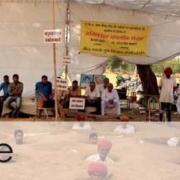 Beyond Hunger Strikes: The Palestinian Prisoners’ Movement and Everyday Resistance$ 20.00[av_heading heading='Article by Julie M. Norman' tag='h3' style='blockquote classic-quote' size='' ] [/av_heading] [av_hr class='short' height='50' shadow='no-shadow' position='center' custom_border='av-border-thin' custom_width='50px' custom_border_color='' custom_margin_top='30px' custom_margin_bottom='30px' icon_select='yes' custom_icon_color='' icon='ue808' font='entypo-fontello']
Beyond Hunger Strikes: The Palestinian Prisoners’ Movement and Everyday Resistance$ 20.00[av_heading heading='Article by Julie M. Norman' tag='h3' style='blockquote classic-quote' size='' ] [/av_heading] [av_hr class='short' height='50' shadow='no-shadow' position='center' custom_border='av-border-thin' custom_width='50px' custom_border_color='' custom_margin_top='30px' custom_margin_bottom='30px' icon_select='yes' custom_icon_color='' icon='ue808' font='entypo-fontello']
Contact
Editor: Stellan Vinthagen
[email protected]
Deputy Editor: Jørgen Johansen
[email protected]
Book reviews
Books for reviews should be sent to:
J. Johansen
Sparsnäs 1010
66891 Ed
Sweden
Publishing
The Journal of Resistance Studies is published by:
Irene Publishing
Sparsnäs 1010
66891 Ed
Sweden
with the support of the University of Massachusetts Amherst.